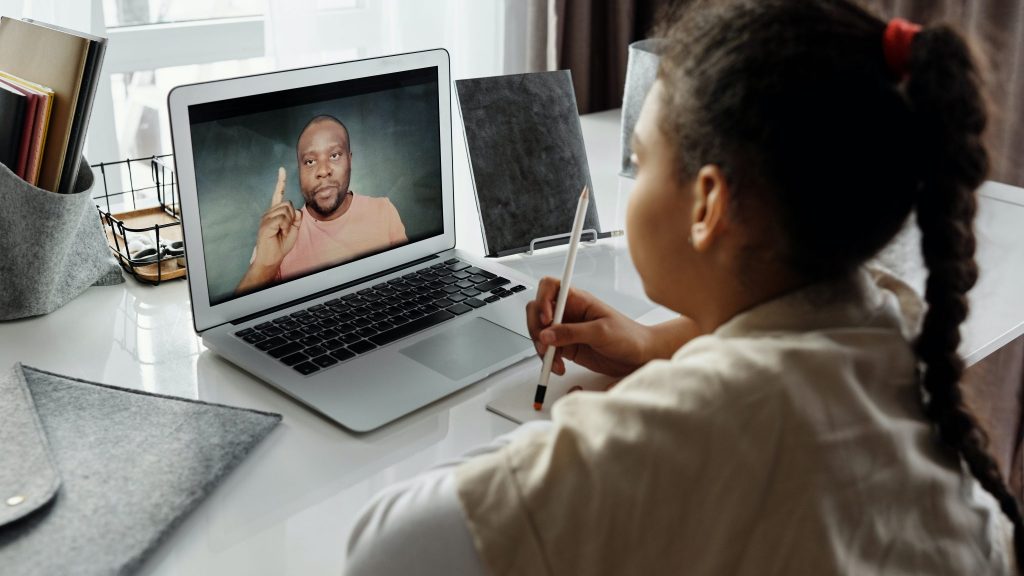Lip-reading and other facial cues improve comprehension for people with and without hearing loss. In fact, visual information makes up an estimated two-thirds of all communication (Gamble & Gamble, 2014). The visual cues we get from a speaker’s face essentially compensate for our inadequate auditory information. Many of us don’t even realize how much we rely on facial cues. It became much more obvious when face-masks became necessary. For instance, a smile or frown or angry eyes add helpful context. Most important is lip-reading, also called speech-reading. Lip-reading gives our brain visual information about vowels and consonants.
How to benefit from facial cues:
- Whenever possible, make sure other people’s faces are visible and well lit.
- Use apps like Face Time, Google Duo or video conferencing apps to supplement audio with facial information.
- Ask people you see often and your medical providers to wear face-masks with clear windows. This enables lip-reading. However, be aware that the clear window makes speech harder to hear.
- Formal training called aural rehabilitation can improve speech-reading abilities. Most hearing care professional do not get insurance reimbursement for aural rehab. Aural rehab is more typically used by speech-language pathologists.
Smartphones
One of the best features of smartphones is the ability to add video to phone calls. In other words, watching someone’s face while they are on a call with you. A 2016 study (Jespersen & Kirkwood, 2016) shows that adding visual information through FaceTime (along with the extended frequency bandwidth of FaceTime) on average added an additional benefit of 23% correct speech understanding for the participants with either mild-to-moderate and severe-to-profound hearing loss.
Auditory Training
In addition, facial cues improve comprehension for people in aural rehabilitation programs. More specifically, it helps people with a cochlear implant or auditory brainstem implant who are retraining their brains to hear. One aural rehab study shows that speech intelligibility scores improve with the addition of visual cues to auditory input (Kawase T., Hori Y. et al, 2015).

